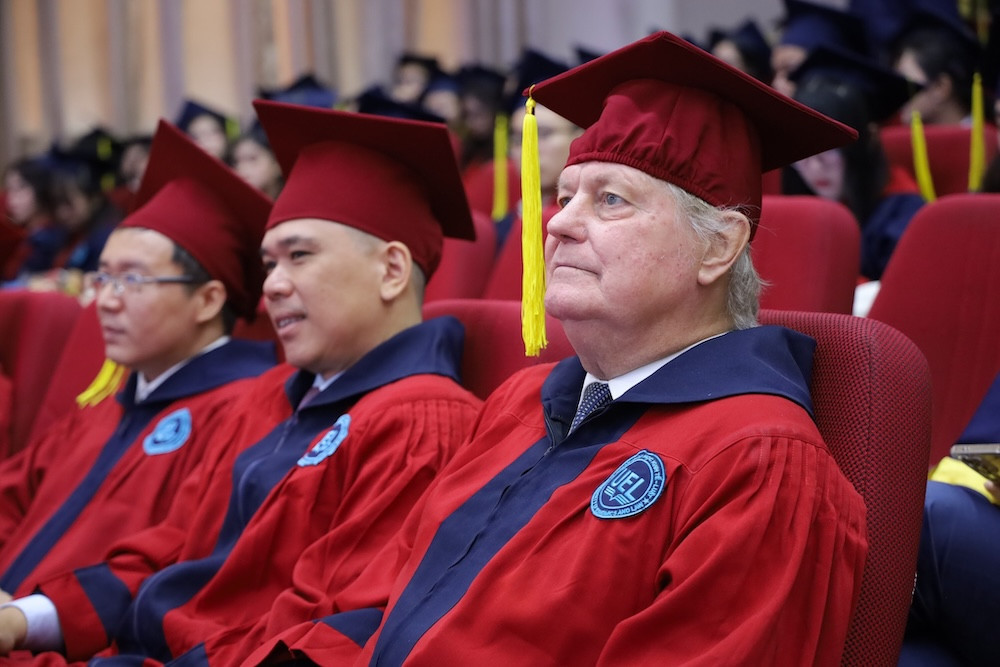
Associate Professor Do Van Dung, former principal of HCM City University of Technology and Education, said the three major income sources include monthly salaries from the state and pay from universities based on their position; additional teaching hours at their school or work as visiting lecturers at other schools; and scientific research.
“A professor or a PhD just needs to publish 5-6 articles a year to have an income of billions of dong,” Dung said.
The improved income of professors and PhDs is good news to many because high income lecturers can help improve the teaching quality and prevent ‘brain drain’. Meanwhile, others point out that some universities publish hundreds of scientific articles each year, but the income from technology transfer is modest.
Reports show that in 2023, the major revenue source for universities in Vietnam was tuition, accounting for 70-99 percent of total revenue. The university with the highest tuition revenue proportion was Nguyen Tat Thanh University (99 percent), while Hanoi University of Science and Technology (HUST) had the lowest (67 percent).
The income from scientific research and technology transfers was small.
Le Dong Phuong, former Director of the Center for Higher Education Research under the Vietnam Institute of Educational Sciences, said the income of university lecturers is proportional to the workload they undertake, plus additional bonuses for outstanding contributions or research achievements.
Therefore, if lecturers make significant contributions, their income will increase accordingly, depending on the university’s internal expenditure regulations.
According to Le Dong Phuong, internal expenditure regulations reflect universities’ priorities, whether they lean toward publishing, training, research, or technology transfer.
"In recent years, higher education institutions have sought to elevate their status through publishing, offering rewards of hundreds of millions VND for each international paper. This approach has enabled many universities to achieve thousands of published works annually, but this is really costly," Phuong noted.
He said that due to limited budgets, Vietnamese higher education institutions currently rely heavily on service revenue, primarily from training services. In other words, students are effectively ‘funding’ lecturers’ publications.
This raises the question of whether it is appropriate to use tuition and fees to support lecturers’ professional activities when facilities and other quality assurance conditions remain inadequate.
"The question is to what extent should scientific publishing be encouraged? Genuine research and published results by lecturers enhance the scientific content of training and help students quickly access scientific advancements to prepare for their future careers. However, if publishing just aims at meeting quotas, this would be a waste of resources and directly diminishes students’ scientific 'benefits,'" Phuong said.
He argued that the key issue currently is how universities manage the system of ‘rewarding’ for publishing to maintain their reputation while genuinely improving the quality of academic and training activities.
He proposed that universities recalibrate their internal expenditure quotas to avoid financial loopholes and exploitation by certain individuals, as has occurred recently.
A representative from a university in HCM City noted that while professors and PhDs earn high incomes, their efforts vary. "Some dedicate all their energy to research and advancing science, but others merely 'benefit' from their reputation without conducting meaningful research," the representative said.
Therefore, universities should establish a set of criteria to evaluate the "real value" of professors and doctors. First, assess their scientific research based on the quantity and quality of works published in reputable international journals or their practical societal applications.
Second, evaluate their contributions to enhancing student quality through teaching (assessed via anonymous student surveys), and the number of students successfully mentored (theses, startups, employment outcomes, etc.).
Third, consider their collaborative projects with businesses, research institutes, or communities to address real-world issues. Finally, consider if they have advanced teaching methods or initiatives to improve the education system.
"Every year, professors and doctoral holders should publicly report their value on an online platform managed by the university. Students, colleagues, and an independent panel - including representatives from businesses or alumni - would score them based on these criteria," he suggested.
Le Huyen